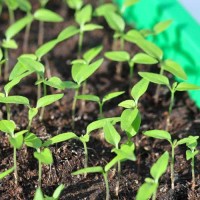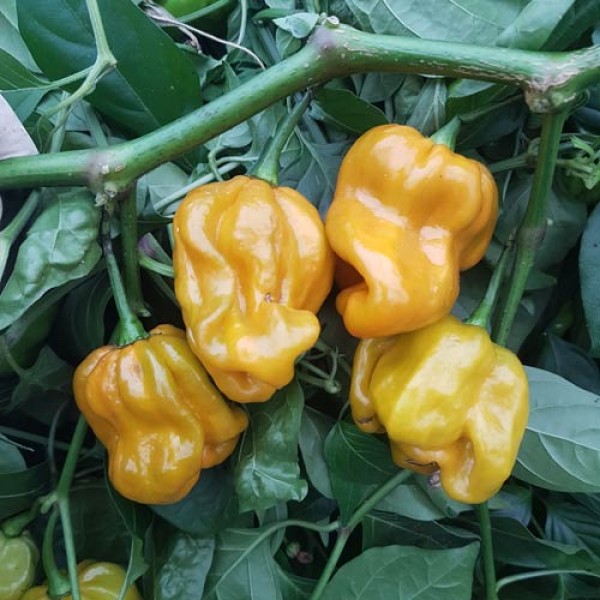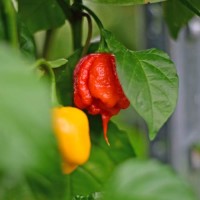Habanero Mustard Chili Seeds
Prices incl. VAT plus shipping costs
Immediately ready for shipping. Delivery time: 1-3 business days.
- Order number: 9148
- Chili spiciness: 10Extremely hot
Habanero Mustard Chili Seeds
Info: The Habanero Mustard variant is a breeding from the USA and displays an interesting colour sequence: The fruits ripen from green to violet to orange / mustard coloured. Unusually for a Habanero, they are relatively thick-fleshed, and are accordingly juicy. They have a fruity flavour and are therefore excellent for making salsas or hot sauces, for cooking and for drying.
General Info: The Habanero variety probably comes from the Yucatan region of Mexico. While the name “Habanero” means “from Havana” in English, they are only found occasionally in Cuba. They are still mainly cultivated on the Yucatan peninsula, although there they are predominantly orange and yellow Habanero varieties. The red varieties mostly come from the Caribbean or the southern states of the USA.
Care: The germination temperature is between 22 und 28°C (8 - 20 day germination period), therefore the use of a greenhouse and a heating mat is recommended. The plants need fresh, well-fertilised, permeable soil, and do not tolerate waterlogging. They should be planted in a sunny, protected place with at least 6 hours of sunlight - preferably more. Put the plants outside approx. 2 to 3 weeks after the last frost.
Tips for successful chili cultivation can be found in our Chili Cultivation Instructions and in the Chili Diary.
| Type | Capsicum chinense |
| Content | 10 pieces |
| Heat Level | 10 |
| Scoville | 100.000 - 500.000 SHU |
| optimal germination temperature | 22 - 28 °C |
| Sowing | Jan. - Apr. |
| Flowers | white (May-July) |
| Plant growth habit | bushy, approx. 100 cm in height |
| Ripening | from green to light violet to yellow/mustard |
| Fruit appearance | round, wrinkled, approx. 4 x 4 cm |
| Ripening time | 90 days |
| Origin | USA |
| Schärfegrad: | 10 |
2018 sehr gut gewachsen
Diese Habanero-Sorte ist im heißen Sommer 2018 sehr gut gewachsen und hat auch reich getragen.
Das Hauptproblem war jedoch, dass manche Früchte bereits auf der Pflanze zu faulen begonnen haben und (wie auch meine anderen Habaneros) teilweise von Ohrwürmern angefressen wurden - das habe ich sonst noch bei keiner anderen Chili beobachten können, sondern nur bei meinen Mini-Paprikas.
Allgemein lassen sich Habaneros (vermutlich wegen ihrem dicken Fruchtfleisch) nur sehr beschränkt aufbewahren, weil sie ohne Trocknung rasch verderben.
Die intakten Früchte habe ich eingefroren, weil ich zum Erntezeitpunkt noch kein Dörrgerät zur Verfügung hatte.
Über den Geschmack kann ich noch nichts sagen, weil sie als Würze vorgesehen und zum so essen viel zu scharf sind.


 Crash Course Chilli Cultivation
Crash Course Chilli Cultivation  How to germinate chillies
How to germinate chillies 



 Crash Course Chilli Cultivation
Crash Course Chilli Cultivation  How to germinate chillies
How to germinate chillies 















































